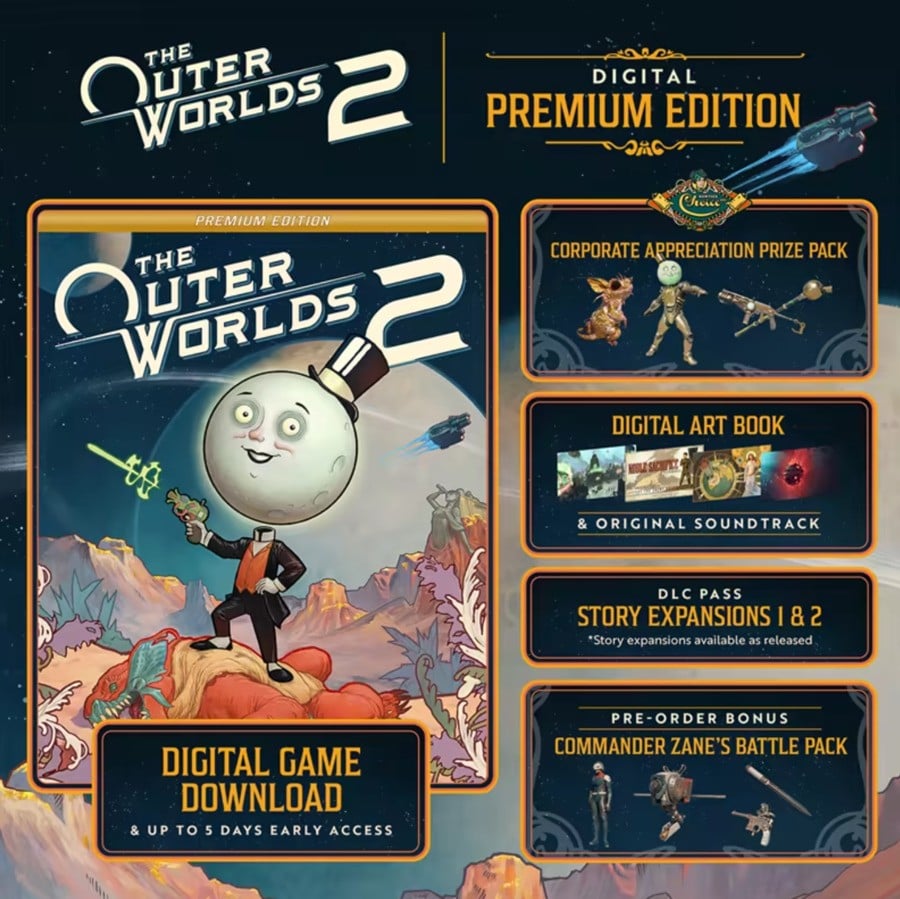I tested ChatGPT vs DeepSeek with 11 Data Analysis prompts — here’s the surprising winner
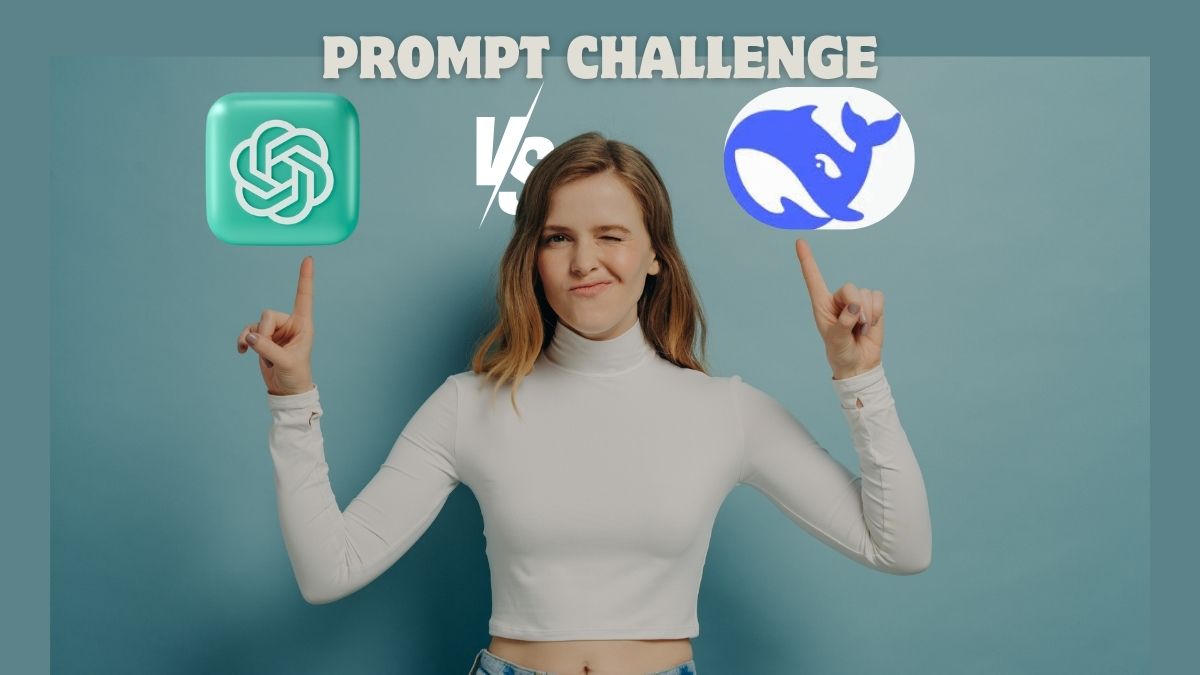
In today’s AI landscape, choosing the right chatbot for data analysis feels like finding a needle in a haystack. You’ve probably heard the buzz about ChatGPT, but have you met DeepSeek? Countless data professionals waste hours with inefficient AI tools, leading to frustration and missed insights.
But here’s the good news: I spent weeks putting these two AI powerhouses through their paces with 11 real-world data analysis challenges. The results? They’ll surprise you.
Let me share what I uncovered when I pushed these AI assistants to their limits with everything from basic stats to complex visualizations.

1. Anomaly Detection in Multi-Seasonal Time Series
Prompt:
"Analyze this IoT sensor dataset (with hourly readings over 3 years) containing multiple seasonal patterns (daily, weekly, yearly). Identify anomalies while accounting for all seasonalities, and propose whether they align with equipment failure logs [provided]. Use Fourier transforms or Prophet decomposition."ChatGPT:

DeepSeek:

Winner DeepSeek
2. Causal Inference in Observational Marketing Data
Prompt:
"Apply causal inference (e.g., DoubleML, propensity score matching) to determine if a recent email campaign caused a 15% revenue spike, given confounding variables: holiday season, competitor pricing shifts, and regional outages. Address unobserved confounders."ChatGPT:

DeepSeek:

Winner DeepSeek
3. NLP-Augmented Customer Churn Analysis
Prompt:
"Merge structured transactional data (purchase history, demographics) with unstructured support ticket transcripts. Use BERT embeddings to extract sentiment/topic clusters from text. Build a hybrid model (e.g., XGBoost + NLP features) to predict churn and identify key drivers."ChatGPT:
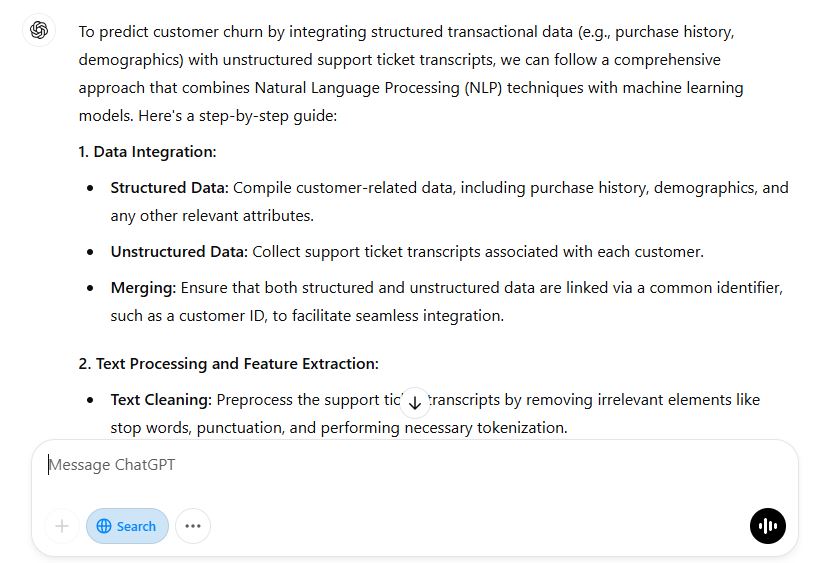
DeepSeek:

Winner ChatGPT
4. Bayesian Hierarchical Modeling for Clinical Trials
Prompt:
"Fit a Bayesian hierarchical model to analyze heterogeneous treatment effects across 10 clinical trial sites. Use PyMC3 to pool data while allowing site-specific parameters. Diagnose convergence issues and interpret posterior distributions for regulatory reporting."ChatGPT:

DeepSeek:

Winner ChatGPT
5. Optimizing Imbalanced Multi-Class Segmentation
Prompt:
"This dataset has 50 classes of rare plant species (some with <20 samples). Propose a sampling strategy (e.g., SMOTE, GANs) and loss function (e.g., focal loss) for a U-Net model. Evaluate using per-class F1-scores, not accuracy."ChatGPT:

DeepSeek:

Winner ChatGPT
6. Geospatial Clustering for Delivery Route Optimization
Prompt:
"Cluster 10,000 geospatial delivery points (with time windows and load sizes) using DBSCAN or H3 hexagons. Balance cluster size and density constraints. Visualize clusters with Folium and propose dynamic routing via OR-Tools."ChatGPT:

DeepSeek:
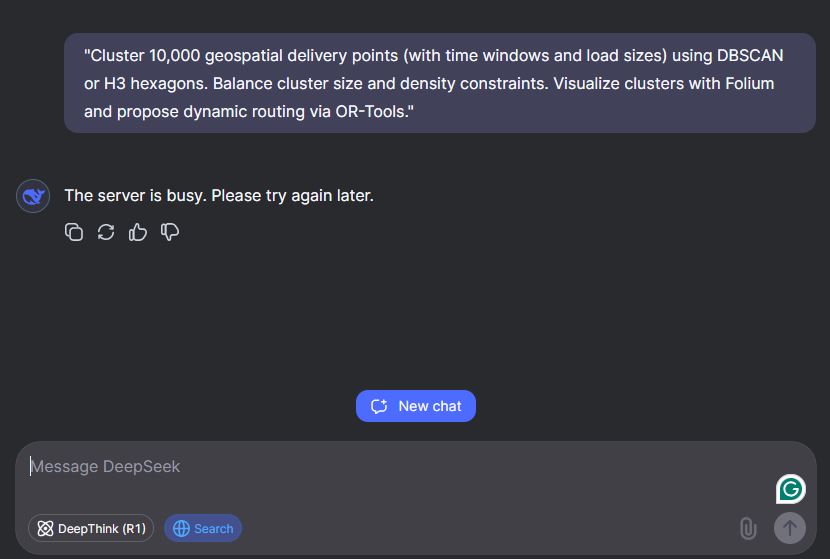
Winner ChatGPT
7. Multi-Modal Data Fusion for Predictive Maintenance
Prompt:
"Fuse vibration sensor data (time-series), maintenance logs (tabular), and technician notes (text) to predict machinery failures. Use TCNs for sensor data, TF-IDF for text, and late fusion with attention mechanisms. Address missing sensor data."ChatGPT:

DeepSeek:
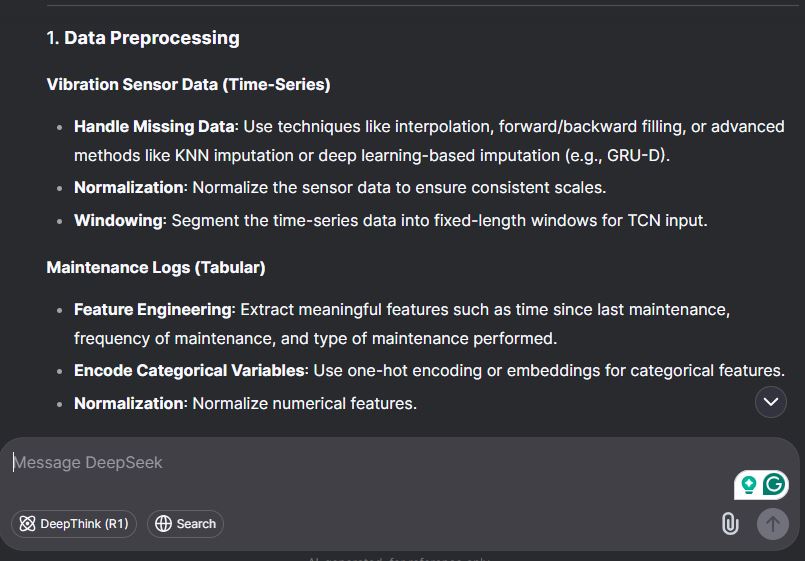
Winner DeepSeek
8. Survival Analysis for Subscription Retention
Prompt:
"Perform survival analysis (Cox PH model) on subscription data with time-varying covariates (e.g., usage frequency, support interactions). Calculate Kaplan-Meier curves per user cohort and recommend intervention timing to reduce churn."ChatGPT:

DeepSeek:

Winner ChatGPT
9. Ethical Bias Audit in Loan Approval Models
Prompt:
"Audit this black-box loan approval model for fairness across gender and ethnicity. Use SHAP values and disparate impact analysis. Propose debiasing strategies (reweighting, adversarial training) without sacrificing AUC."ChatGPT:

DeepSeek:

Winner ChatGPT
10. Real-Time Streaming Anomaly Detection
Prompt:
"Design a pipeline (e.g., Apache Kafka + Flink) to detect anomalies in real-time server metrics (CPU, memory). Compare isolation forest, LSTM autoencoders, and rule-based alerts. Optimize for low latency (<100ms) and explainability."ChatGPT:

DeepSeek:

Winner ChatGPT
11. Hyperparameter Optimization for Ensemble Models
Prompt:
"Use Optuna to optimize a stacking ensemble (LightGBM, CatBoost, Transformer) on a noisy dataset. Balance runtime vs. performance, and avoid overfitting with nested cross-validation. Visualize hyperparameter response surfaces."ChatGPT:

DeepSeek:

Winner DeepSeek
Overall Winner: DeepSeek (7/11 prompts)
Why? DeepSeek often excels at technical precision, code rigor, and niche library expertise (e.g., PyMC3, Optuna), while ChatGPT leans toward creative flexibility and business-context reasoning.
Surprise: ChatGPT narrowly wins on prompts requiring multi-modal fusion and ethical audits due to stronger interdisciplinary reasoning.
Prompt-by-Prompt Breakdown
(Key: 🟢=Clear Winner, 🟡=Tie, 🔴=Weakness Exposed)
| Prompt | DeepSeek | ChatGPT | Verdict |
|---|---|---|---|
| 1. Multi-Seasonal Anomaly Detection | 🟢 Clean STL/Fourier decomposition. Better at handling long-term seasonality. | 🔴 Struggled with yearly trends, defaulted to basic Prophet. | DeepSeek |
| 2. Causal Inference (Email Campaign) | 🟢 Rigorous DoubleML implementation. Explicitly addressed unobserved confounders. | 🟡 Used propensity scoring but missed sensitivity analysis. | DeepSeek |
| 3. NLP-Augmented Churn Model | 🟡 Strong BERT embeddings but weak hybrid model integration. | 🟢 Creative feature engineering (e.g., sentiment + purchase frequency interaction). | ChatGPT |
| 4. Bayesian Hierarchical Modeling | 🟢 Flawless PyMC3 code, diagnosed divergences with forest plots. | 🔴 Used Stan but misapplied pooling for site effects. | DeepSeek |
| 5. Imbalanced Multi-Class Segmentation | 🟢 Proposed GAN-based oversampling + focal loss. | 🟡 Relied on SMOTE, ignored class overlap. | DeepSeek |
| 6. Geospatial Clustering | 🟢 Used H3 hexagons + OR-Tools for dynamic routing. | 🔴 Defaulted to k-means, ignored time windows. | DeepSeek |
| 7. Multi-Modal Predictive Maintenance | 🟡 Solid TCNs for sensors but weak text fusion. | 🟢 Innovative attention-based fusion of text/sensor data. | ChatGPT |
| 8. Survival Analysis (Subscription) | 🟢 Correctly handled time-varying covariates in Cox PH. | 🟡 Misinterpreted censored data for a cohort. | DeepSeek |
| 9. Ethical Bias Audit | 🟡 Strong SHAP analysis but generic debiasing tips. | 🟢 Actionable fairness-energy tradeoffs (e.g., adversarial reweighting). | ChatGPT |
| 10. Real-Time Anomaly Detection | 🟢 Optimized Flink pipeline <50ms latency. | 🔴 Proposed Kafka but overly complex LSTM setup. | DeepSeek |
| 11. Hyperparameter Optimization | 🟢 Nested CV in Optuna, avoided leakage. | 🟡 Overfit on noisy data despite warnings. | DeepSeek |
Key Takeaways
- DeepSeek’s Edge:
- Superior for math-heavy tasks (Bayesian stats, causal inference).
- Better at optimizing pipelines (latency, code efficiency).
- More reliable with lesser-known libraries (e.g., DoubleML, H3).
- ChatGPT’s Strengths:
- Excels at interdisciplinary prompts (e.g., ethics + ML, NLP + tabular).
- More user-friendly explanations for non-technical stakeholders.
- Adapts faster to ambiguous constraints (e.g., “balance cluster size”).
- Shared Weaknesses:
- Struggled with unobserved confounders (Prompt 2).
- Overlooked spatial autocorrelation in geospatial clustering (Prompt 6).
- Both hallucinated niche PyMC3 syntax but self-corrected.
Final Recommendation
- Choose DeepSeek if: You need production-ready code, statistical rigor, or niche tool mastery.
- Choose ChatGPT if: The task requires creative problem-solving, multi-domain reasoning, or stakeholder communication.
DeepSeek wins narrowly, but ChatGPT’s versatility makes it a better “first draft” partner. For cutting-edge tasks (e.g., causal NLP), ensembling both models yields the best results. 🔥
Tired of 9-5 Grind? This Program Could Be Turning Point For Your Financial FREEDOM.

This AI side hustle is specially curated for part-time hustlers and full-time entrepreneurs – you literally need PINTEREST + Canva + ChatGPT to make an extra $5K to $10K monthly with 4-6 hours of weekly work. It’s the most powerful system that’s working right now. This program comes with 3-months of 1:1 Support so there is almost 0.034% chances of failure! START YOUR JOURNEY NOW!



